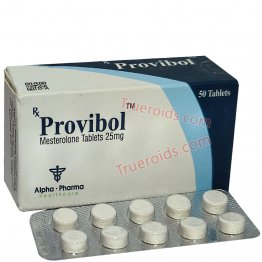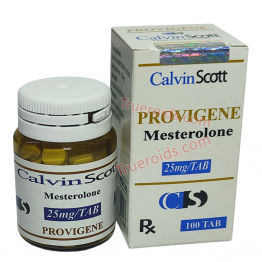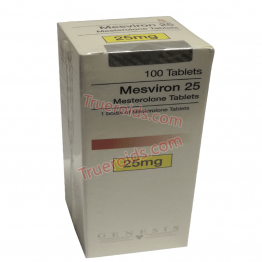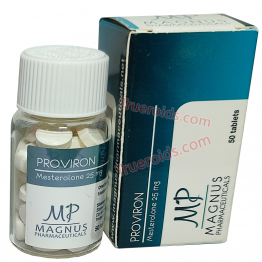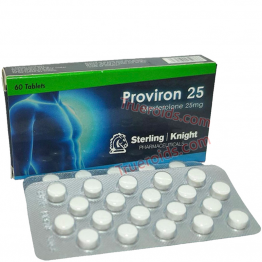Mesterolone
Mesterolone, marketed under the brand name Proviron, emerges as a vital androgenic and anabolic steroid (AAS) medication primarily designated for addressing low testosterone levels. While its utility extends to male infertility treatment, this application remains a topic of contention. Administered orally, here are significant facets concerning mesterolone:
Mechanism and Effects:
Mesterolone, functioning as an agonist of the androgen receptor (AR), operates as a synthetic androgen and anabolic steroid.
Displaying robust androgenic attributes alongside modest anabolic effects, it proves valuable in eliciting masculinization.
Side Effects:
Potential manifestations of masculinization, including acne, scalp hair loss, augmented body hair growth, alterations in vocal characteristics, and heightened sexual desire, may ensue.
Notably, mesterolone poses no risk of liver impairment.
Historical Context and Usage:
First delineated in 1966, mesterolone swiftly garnered adoption for medical purposes by 1967.
In tandem with its medical application, mesterolone has witnessed sporadic utilization for augmenting physique and performance, albeit its infrequent usage for such objectives attributed to its limited anabolic potency.
Mesterolone is subject to stringent regulation as a controlled substance across various jurisdictions, with non-medical utilization generally deemed illicit.
Alpha Pharma Provibol 50 tablets 25mg/tab
Provibol Tablets are meticulously formulated to me..
Calvin Scott Provigene 100 tablets 25mg/tab
Calvin Scott Provigene 100tab 25mg/tabMesterolone,..
Genesis MESVIRON 100tab 25mg/tab
Manufacturer: GenesisInterested in Proviron? Learn..
Magnus Pharmaceuticals Proviron 50tab 25mg/tab
Magnus Pharmaceuticals Proviron 50tab 25mg/tab"Dis..
Sterling Knight Proviron 25 60tab 25mg/tab
Manufacturer: Sterling KnightSubstance: Mesterolon..

